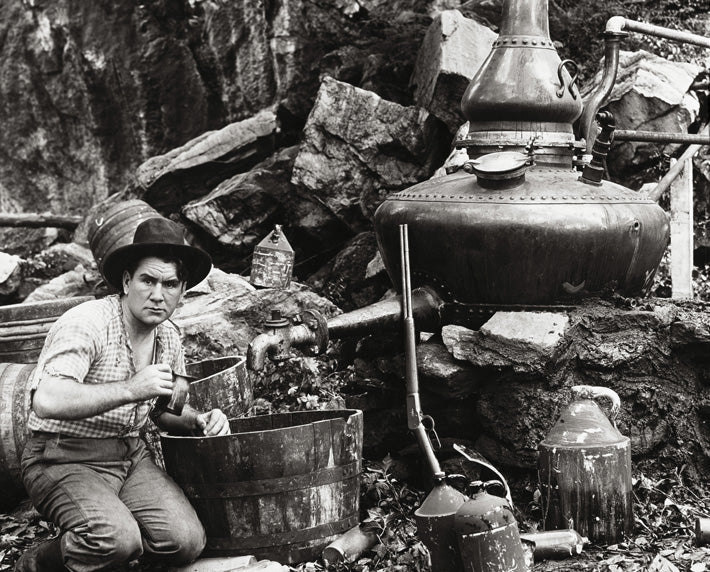
Crafting Liquid Gold: A Step-by-Step Guide to Making Moonshine with a Copper Still
Awaken To The OneShare
The Ultimate Guide to Making Moonshine with a Copper Still
Moonshine has a storied history, steeped in tradition and craft. While the legalities of distilling vary depending on where you live, making moonshine can be an engaging hobby for those permitted to do so. In this guide, we’ll walk you through the process of making moonshine using a copper still, covering everything from selecting ingredients to achieving the perfect distillation.
Understanding the Basics
Before diving into the process, it's essential to understand the fundamental principles of moonshine production:
- Fermentation: This is the process where yeast converts sugars into alcohol. Your mash (a mixture of water, grain, and sugar) serves as the medium for fermentation.
- Distillation: Distillation separates alcohol from the mash by heating it to a point where alcohol vaporizes but water and other impurities do not. A copper still is ideal for this process due to its heat conductivity and ability to remove sulfur compounds, which can create off-flavors.
What You’ll Need
Ingredients:
- Water: Clean, filtered water is essential for the mash.
- Grain: Cornmeal is traditional for classic moonshine, but you can also use barley, rye, or wheat.
- Sugar: Granulated sugar or malted barley helps boost fermentation.
- Yeast: Distiller’s yeast is ideal due to its high alcohol tolerance.
Equipment:
- Copper Still: Ensure your still is clean and free of any residues from previous batches.
- Fermentation Vessel: A food-grade plastic bucket or glass carboy.
- Thermometer: To monitor temperatures during fermentation and distillation.
- Hydrometer: To measure alcohol content.
- Siphon: For transferring liquids without disturbing sediment.
- Heat Source: A propane burner or electric heat source for the still.
Step-by-Step Process
1. Preparing the Mash
The mash forms the foundation of your moonshine. Here's how to make it:
- Heat Water: Bring 5 gallons of water to about 165°F in a large pot.
- Add Grain: Slowly stir in 7 pounds of cornmeal, ensuring there are no clumps. Maintain the temperature at 150-160°F.
- Convert Starch to Sugar: Add 1-2 pounds of malted barley to the mixture and stir well. Maintain this temperature for 90 minutes, allowing enzymes in the barley to convert starches into fermentable sugars.
- Cool the Mash: Let the mixture cool to around 75°F before proceeding.
- Add Yeast: Sprinkle distiller’s yeast into the mash and stir gently. Transfer the mash into a fermentation vessel and seal it with an airlock.
2. Fermentation
Fermentation is where the magic begins. Store your fermentation vessel in a dark, warm place (65-75°F) and allow it to sit for 7-10 days. During this time:
- The yeast will consume the sugars and produce alcohol and carbon dioxide.
- Bubbling in the airlock will indicate active fermentation.
- Use a hydrometer to check specific gravity; fermentation is complete when the reading stabilizes.
3. Distillation
Once fermentation is complete, it’s time to distill the alcohol. Here’s how to do it safely and effectively:
- Set Up Your Copper Still: Place your copper still on a stable surface and connect all components, including the condenser and collection jar.
- Transfer the Mash: Use a siphon to transfer the liquid portion of the mash (called the "wash") into the still, leaving behind the sediment.
- Heat the Still: Gradually heat the wash to about 173°F. Alcohol will vaporize at this temperature, while water and impurities remain in the still.
- Collect the Distillate: The alcohol vapor will pass through the condenser and return to liquid form. Collect this in small containers to separate the "cuts" (more on this below).
4. Making the Cuts
One of the most critical parts of distillation is separating the distillate into three sections:
- Foreshots: The first 5% of the distillate contains harmful methanol. Discard this portion.
- Heads: The next portion contains volatile alcohols that can cause headaches. While some moonshiners keep this, it’s better to discard or use it for cleaning purposes.
- Hearts: This is the high-quality, drinkable ethanol that forms the core of your moonshine. Collect this carefully.
- Tails: The final portion contains heavier compounds and oils. Stop collecting when the distillate becomes cloudy or the alcohol content drops significantly.
5. Filtering and Diluting
To improve the taste and safety of your moonshine:
- Filter: Run the hearts through an activated carbon filter to remove any remaining impurities.
- Dilute: Use distilled water to lower the alcohol content to a safe drinking level (typically around 40% ABV or 80 proof).
Aging and Flavoring (Optional)
While traditional moonshine is consumed unaged, you can experiment with aging or flavoring your spirit:
- Aging: Store moonshine in charred oak barrels for a few months to develop a whiskey-like flavor.
- Flavoring: Add fruits, spices, or honey during fermentation or after distillation for unique flavors.
Safety Tips
Making moonshine can be dangerous if not done properly. Always:
- Check Legal Requirements: Ensure you’re compliant with local laws.
- Work in a Well-Ventilated Area: Alcohol vapors are flammable.
- Monitor Temperature Closely: Overheating can lead to accidents or poor-quality moonshine.
- Use Proper Equipment: Avoid makeshift setups to minimize risk.
Final Thoughts
Crafting moonshine with a copper still is a rewarding process that combines science, artistry, and tradition. By following these steps carefully and paying attention to detail, you can produce a high-quality spirit to enjoy responsibly. Whether you’re honoring a family tradition or diving into a new hobby, moonshining is an experience like no other.
Cheers to safe and successful distilling!
